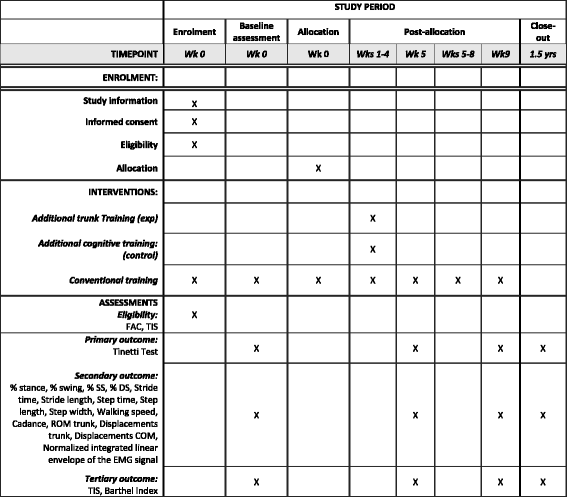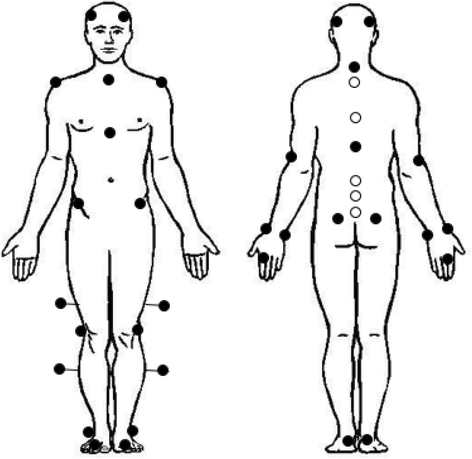Effectiveness of additional trunk exercises on gait performance: study protocol for a randomized controlled trial
- PMID: 28578679
- PMCID: PMC5455138
- DOI: 10.1186/s13063-017-1989-1
Effectiveness of additional trunk exercises on gait performance: study protocol for a randomized controlled trial
Abstract
Background: Evidence is lacking concerning the effect of additional trunk rehabilitation on gait performance. Investigating gait performance by both clinical and biomechanical outcome measures might lead to new scientific insights into the importance of the trunk during gait rehabilitation in people suffering from stroke. This protocol was written according to the SPIRIT 2013 Statement.
Methods and design: An assessor-blinded randomized controlled trial will be conducted in patients with impaired trunk control after stroke. A total of 60 patients will be randomly allocated to the control or the experimental group by means of sealed opaque envelopes. They will receive either 16 h of additional trunk exercises (experimental group) or cognitive exercises (controls) for 1 h a day, 4 days a week for 4 weeks. Patients will also receive 2 h of standard care consisting of physiotherapy and occupational therapy. Gait performance will be assessed clinically by the Tinetti Test and biomechanically by means of a full body gait analysis. In addition, the effect of the exercise protocol on the trunk itself and trunk activities of daily living will be assessed by the Trunk Impairment Scale and the Barthel Index.
Discussion: Despite the evidence demonstrating the importance of trunk control after stroke, studies about the effects of trunk rehabilitation on gait performance are inconsistent. In the current study, a more sophisticated treatment protocol will be used to enlarge therapeutic improvements, the relationship between clinical and biomechanical measures of gait performance can be investigated, and the sustainability of the effects of trunk exercises over time will be examined. Since clinical improvements are of greater importance to patients and physiotherapists, clinical assessment scales will be used as primary outcome measures.
Trial registration: ClinicalTrials.gov, ID: NCT02708888 . Registered on 2 March 2016.
Keywords: Balance; Core stability; Gait; Rehabilitation; Stroke; Trunk.
Figures


References
-
- Bohannon RW, Cassidy D, Walsh S. Trunk muscle strength is impaired multidirectionally after stroke. Clin Rehabil. 1995;9(1):47–51. doi: 10.1177/026921559500900107. - DOI
Publication types
MeSH terms
Associated data
LinkOut - more resources
Full Text Sources
Other Literature Sources
Medical

